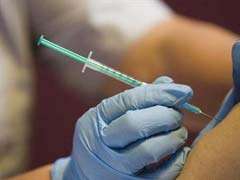Unsafe needle practices main cause of Hepatitis C, warn doctors
Not making proper use of injections such as reusing it, incorrect disposal and poor sterilisation of syringes are increasingly contributing to Hepatitis-C Virus infection in India, claim doctors. This deadly disease, that does

Not making proper use of injections such as reusing it, incorrect disposal and poor sterilisation of syringes are increasingly contributing to Hepatitis-C Virus infection in India, claim doctors.
This deadly disease, that does not have a vaccine and spreads mainly through unsafe blood transfusion and needles, can be completely cured if detected at an early stage.
Doctors said, but prolonged neglect may lead to liver cirrhosis and even cancer.
"Hepatitis-C (HCV) is 10 times more infectious than HIV. It is asymptomatic, which means it does not exhibit any obvious symptoms of sickness in its initial stages. If it does, it can be easily diagnosed with a blood test and treated," Dr Manav Wadhawan, a gastroenterologist with the Fortis Escorts Liver and Digestive Diseases Institute, said.
He identified exhaustion, jaundice, abdominal pain, loss of appetite as some of the symptoms of HCV.
According to a WHO estimate, around 12 million people are affected by the disease in India.
Dr Siddharth Srivastava, who works with the Department of Gastroenterology in GB Pant Hospital, underscored the need for patients to be vigilant and be aware of safe injection practices like the use of sterile, single-use or preventing reuse of syringes.
"The irony is that Hepatitis-B has a vaccine, but no cure, while hepatitis C has no vaccine, it does have a cure. Laid down WHO safe injection protocols should be followed by healthcare practitioners. Staff should wash their hands before administering injections, and they should clean the area of the injection adequately," he said.
According to health experts, around 5,00,000 people die each year from hepatitis C-related liver diseases in India and an estimated 4.7 million HCV infections can be attributed to poor needle practices.
(With Agency inputs)